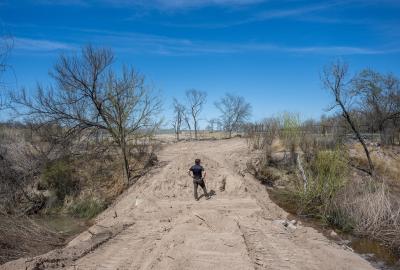Houston residents sound alarm on sediment dumping project
A plan approved under the Trump EPA will bring millions of tons of sediment from a polluted canal into residential neighborhoods. People want answers.
When Cruz Hinojosa bought his 4-bedroom home in Galena Park, Texas in 1999, there was a lot to like — the quiet neighborhood just outside Houston, good schools and a good price on a house in immaculate condition.
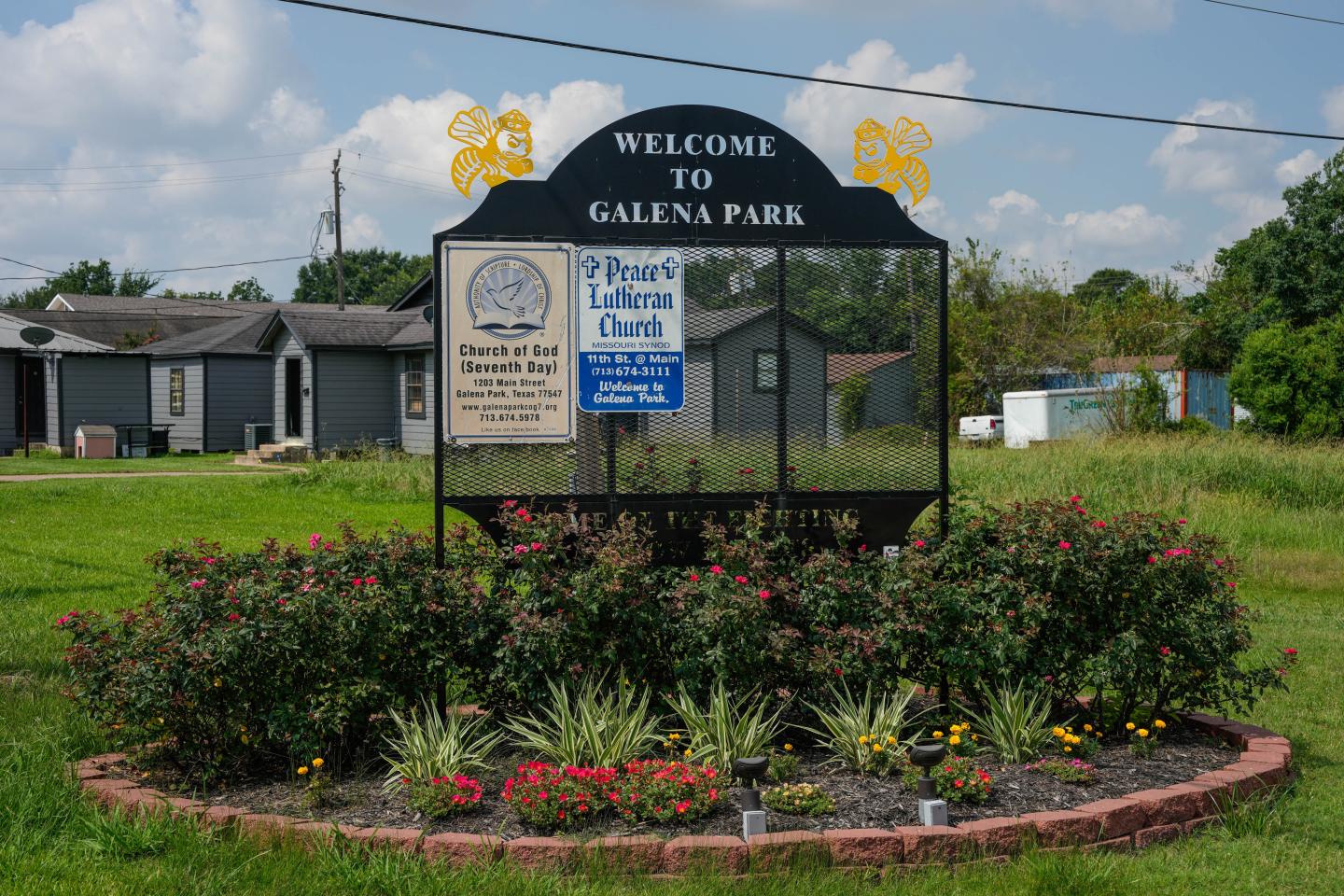
He was concerned about the lack of representation on the city council for the town’s Hispanic population and the lack of quality food in the grocery store. He wasn’t too worried about a 3-foot corrugated pipe he spotted sticking out of the ground near the railroad tracks, a few blocks away.
“I asked the guy I was buying it from, ‘What’s that pipe over there?’ And he said, ‘Oh, it’s just for the dredging.’ I said ‘Oh. OK.’ I didn’t really know what was in there.”
Hinojosa went on to immerse himself in his new community. He served on Galena Park’s school board, the city council, started a local chapter of the League of United Latin American Citizens, and co-founded a group called Environmental Community Advocates of Galena Park.
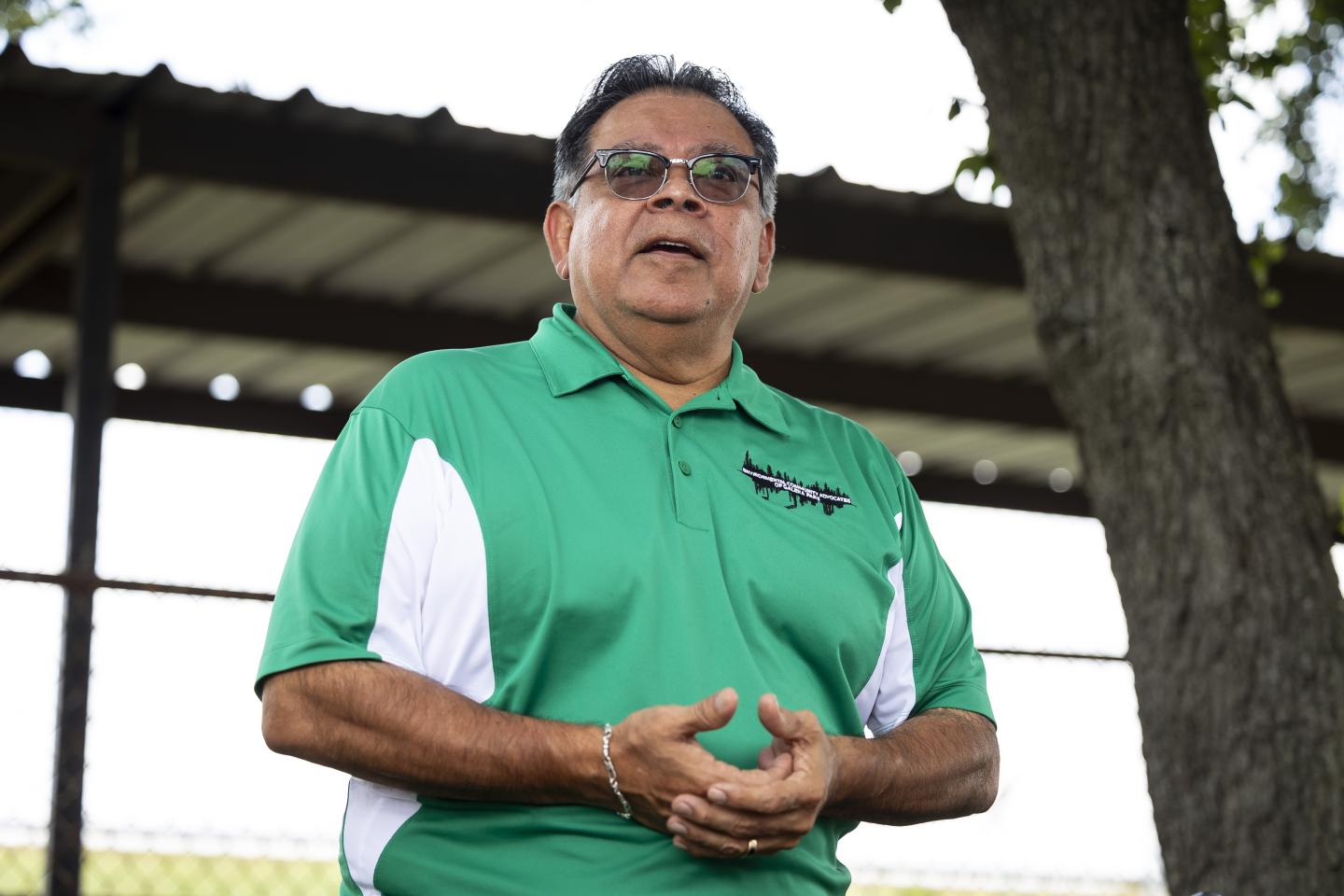
But more than a decade passed before he learned more about that pipe. It was dumping sediment dredged from the Houston Ship Channel, a heavily polluted industrial canal, into his community.
Today, that dredged material, dug up over decades during routine Ship Channel maintenance, is piled 20 feet high across two 300-acre sites in Galena Park and even higher in other Houston communities nearby.
And a massive new dredging plan, approved by the Environmental Protection Agency under the Trump administration, is poised to bring in millions of tons more.
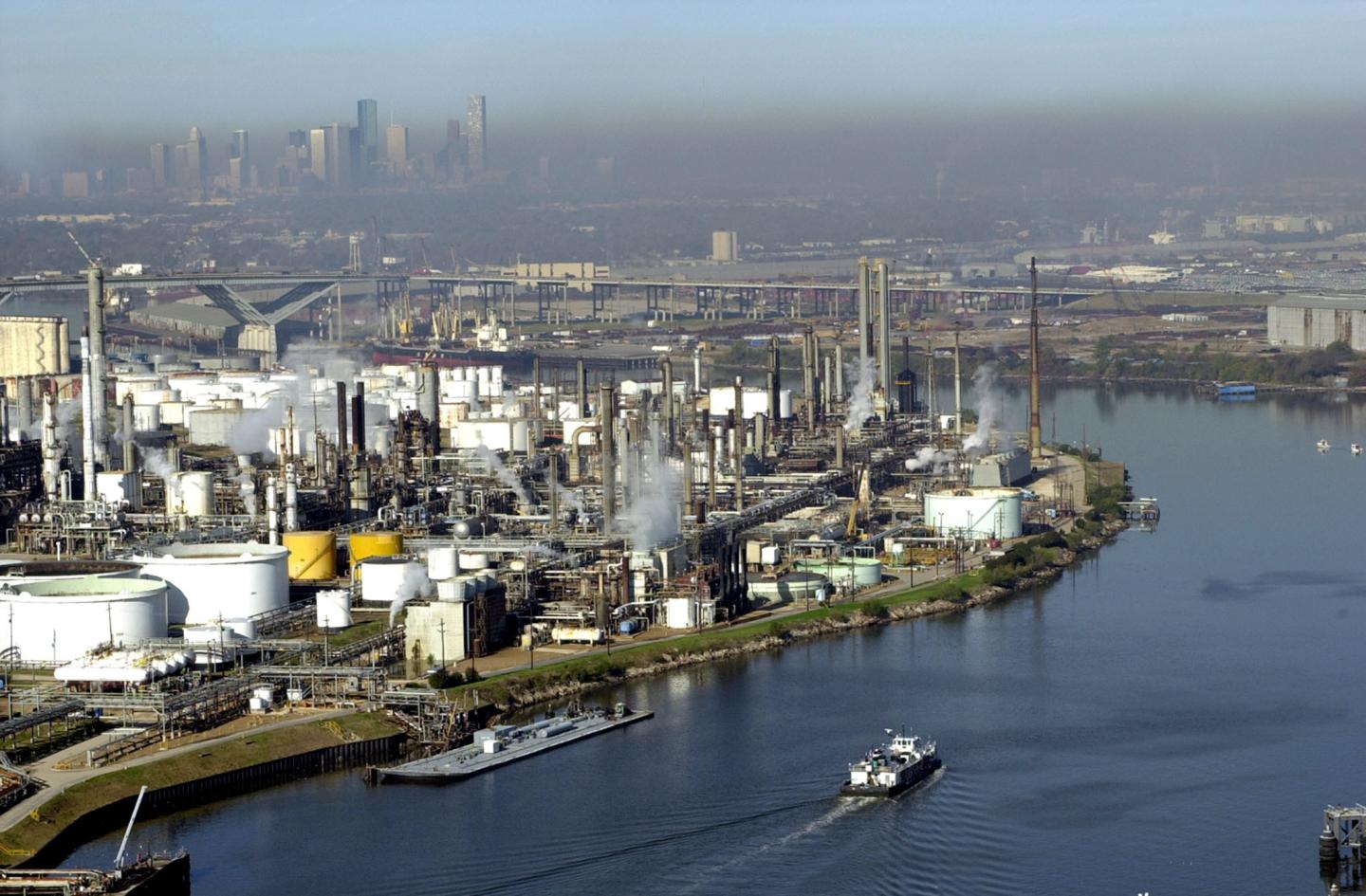
Project 11 will widen and deepen the Houston Ship Channel to accommodate more and larger ships serving the petrochemical industry. (Wikimedia Commons)
Houston Ship Channel expansion
No one really knows what’s in the dredged muck, but there’s good reason for concern. The 52-mile-long Ship Channel, a once-lazy bayou pressed into service as a maritime freeway, is the backbone of Houston’s petrochemical industry, bringing ships from the Gulf of Mexico into the Port of Houston. Its banks are lined with refineries, petrochemical plants and other industrial facilities. Smokestacks, flares and outtake pipes pump industrial waste into the water and air.
As part of Project 11, a $1 billion effort to deepen and widen the channel to accommodate more and bigger ships, millions of cubic yards of dredged sediment — enough to fill hundreds of thousands of dump trucks — will be dumped in three residential communities: Galena Park, Port Houston and Pleasantville.
According to the Army Corps of Engineers, the federal agency responsible for most of the dredging, Project 11 is “socially and environmentally acceptable.” The Trump EPA signed off on the plan in 2020, saying it had no objections.
But in its environmental impact study, the Corps only looked at how the sediment might affect marine life — not humans.
What’s in the muck?
In Galena Park, the two dump sites — the Corps calls them “placement areas” — are surrounded by grassy levees. Wedged in between them is a baseball field where the Little League plays. Across the street are neat rows of single-family homes. Residents say they like to watch 4th of July fireworks from the spot. Aside from a few small “no trespassing” signs, there are no warnings as to what lies inside.

And it’s impossible to know, because the Corps has never tested this sediment. But buried in Appendix T of the Corps’ 250-page environmental impact statement is a clue — a record of toxic chemicals detected in 11 sediment samples recently taken from the channel. They include PCBs, benzo(a)pyrene, dioxins and furans, which cause cancer, reproductive harm and developmental harm, among other health effects.
Although the Corps and the Trump EPA concluded their plans posed no environmental risks, scientists from the nonprofit Environmental Defense Fund, which examined the report on behalf of the Healthy Port Communities Coalition, found several flaws. First, the testing did not meet joint EPA and Corps sampling guidelines, and failed to capture the full scope of what might be in the dredged material.
“Eleven samples along miles of channel isn’t enough, statistically, to say this doesn’t cause any risk,” says EDF toxicologist Paige Varner.
Second, the Corps used Texas state water quality guidelines for aquatic species to make its determination, rather than the EPA’s more protective human health guidelines. And even those guidelines are not strong enough to protect communities near the Ship Channel, where people are exposed to multiple sources of pollution, says Varner. Galena Park, a city of 10,000, is home to 12 petrochemical complexes. Ship Channel communities see a chemical accident almost every month, according to the Coalition to Prevent Chemical Disasters.
“These communities are already exposed to extreme levels of toxic air pollution that cause the same health effects,” says Varner. “They are vastly overburdened by pollution, which is why it makes sense to use more protective standards.”
The HPCC joined forces with EDF and Lone Star Legal Aid to obtain more sampling data from the Corps through Freedom of Information Act requests. They also conducted independent testing of sediment samples taken from just outside the placement areas. (The Corps refused requests to access sediment within the sites.)
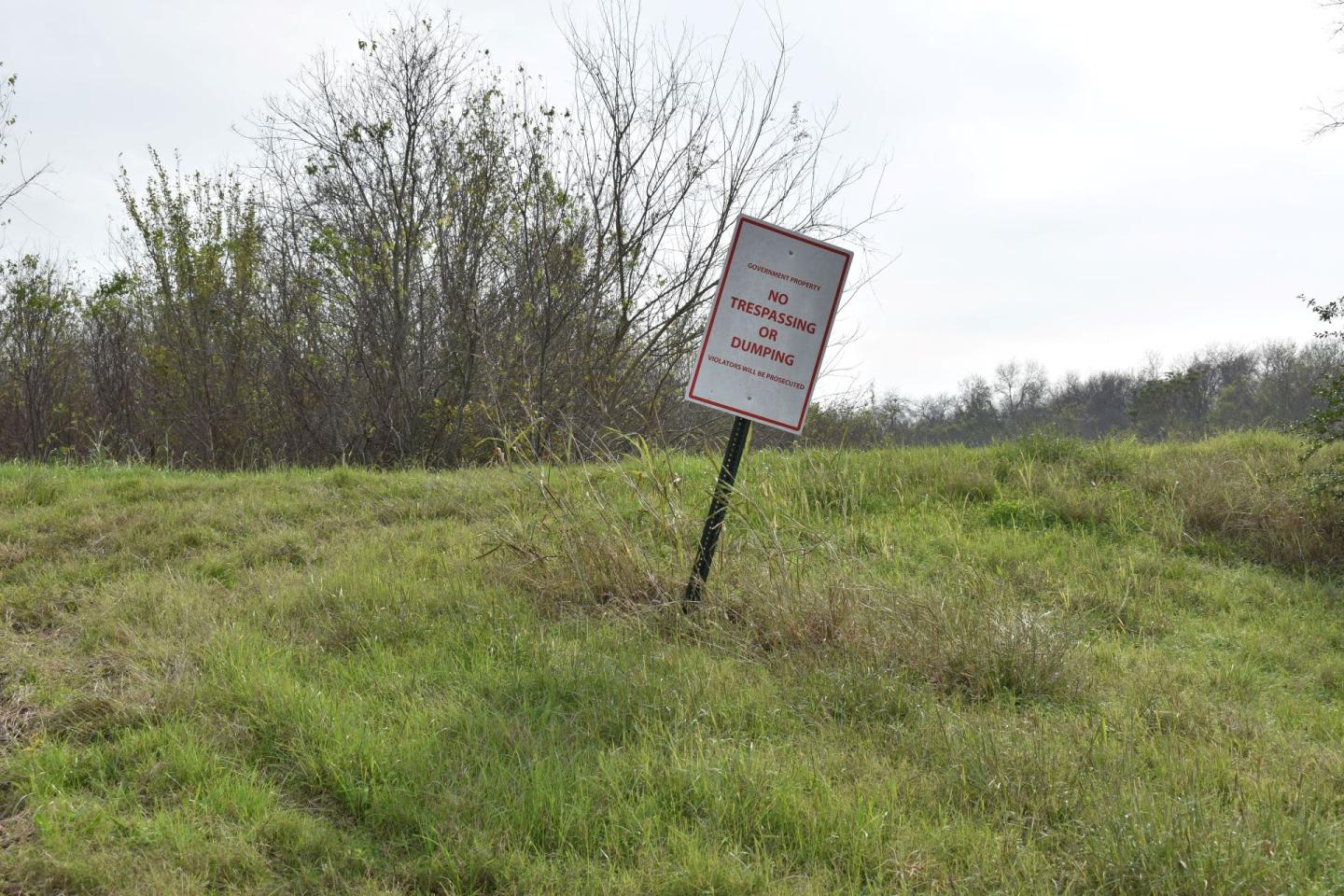
When comparing these samples against benchmarks, EDF found elevated levels of 10 chemical contaminants in the sediment, some as much as 25 times greater than EPA guidelines.
Exceeding these guidelines does not trigger regulatory action, says Varner, but “it’s a clear indication that more testing needs to be done.”
However, in a series of community meetings with senior representatives from the Corps, the Port of Houston and the EPA, the Corps has refused to conduct more testing.
In a statement, the Corps said, “The USACE considered all relevant laws, executive orders, regulations, and local government plans, aligning with the U.S. Water Resources Council’s Principles and Guidelines.”
"The Corps says they followed the rules, but they clearly did not follow the joint EPA and Corps guidance for assessing the toxicity of ship channel sediment,” says Ken Adler, a former EPA official who is now a consultant for the HPCC. “Under Trump, EPA Region 6 [which covers the south-central U.S.] ignored its federal oversight responsibilities and let the Corps do whatever they want.”
A history of floods
Project 11 will create a third dump site in Galena Park, next to the two existing ones. And just a few miles away in Pleasantville, the Corps plans to re-open a long-dormant 10-acre placement area, building it up as high as 60 feet with sediment from Project 11.
Pleasantville was established after World War II for middle-class Black homebuyers who were blocked from buying upscale housing in white areas. Today, Pleasantville residents face serious air quality issues due to pollution from petrochemical facilities and highway traffic. The community has also seen flooding increase after highway construction impeded the natural drainage of water out of town and into the Ship Channel.
Community leaders are concerned that the plan to build up the placement area even higher would further impede drainage and exacerbate flooding. They’re also worried about the structural integrity of the dump sites, as climate change brings heavier rains and bigger storms to Houston.
Hurricane Beryl recently caused flooding, wind damage and widespread power failures in Houston. Hurricane Harvey in 2017 dumped so much rain on Houston that the Earth’s crust under the city sank nearly an inch under the weight of the water.
But the Corps selected its dump sites before anyone was aware of the increased flood risk that Houston communities face today.
In Pleasantville, the concern is rooted in the memory of a previous disaster. During the floods of 1957, the earthen levees surrounding the placement area ruptured, sending a sludgy river of Ship Channel sediment oozing through the streets.
Cleophus Sharp of Achieving Community Tasks Successfully, a Houston nonprofit focused on environmental, climate and social justice, recalls riding along in the car as his father helped evacuate elderly people trapped by rising waters.
“I watched that sludge rise up,” he recalls. “It was a dark brown, and I had never seen anything like it before — it came up to the car door.”
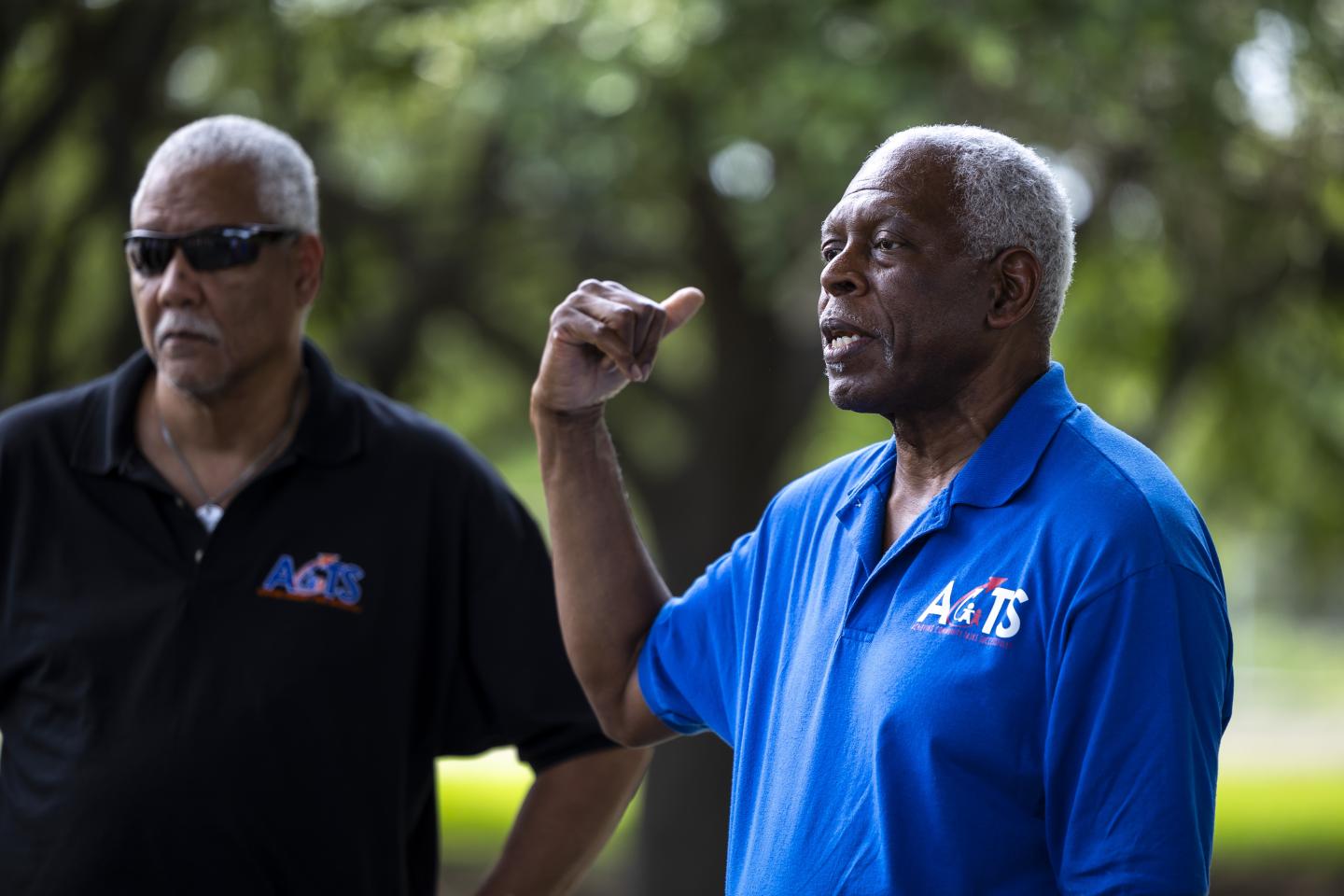
Several men who waded through the water to assist in rescue efforts, says Sharp, later developed cancer. As an adult, Sharp, who developed asthma after the floods, left Pleasantville for the west side of Houston for better air quality.
“Like all big projects, Project 11 has advantages and disadvantages,” he says. “But too many people got ill after the levee broke in ‘57. We’re not going to be completely satisfied until we know what's in there.”
Leadership makes a difference
Thanks to the advocacy of Sharp and others in the HPCC, the Port of Houston has agreed to use low-emission dredging equipment in its section of the project, to reduce the amount of air pollution it will add to the area.
The EPA has also demonstrated new interest in Project 11. Under President Biden's Justice 40 initiative, the EPA has made environmental justice a priority.
Dr. Earthea Nance, an EPA regional director appointed under the Biden administration in 2021, has attended two unprecedented 6-hour meetings with top Port and Corps officials, alongside community advocates.
“The EPA involvement opened doors that may not have been open,” says Pleasantville’s Bridgette Murray, the founder of ACTS and a member of the Port of Houston’s Community Advisory Council. “Her presence got some folks to the table.”
But many questions remain unanswered. The HPCC continues to push for more testing, and for measures to reduce flood risk and air pollution. Murray and others are meeting with state, local and federal elected officials to voice their concerns.
“We want more transparency,” says Murray. “To have had a breach back in the ‘50s, and they come to us now, without evidence of how they have fortified the berms, gives us a lot of pause. You need to demonstrate how you are protecting us.”
Hinojosa also wants reassurance, and not only from the government. When a big hurricane does come up the Ship Channel, he asks one thing:
“Pray for Galena Park.”


